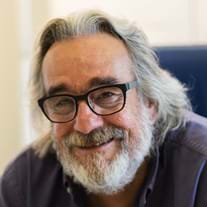The Regenerative, Healing Powers of Stem Cells
The Honorees of the 2019 Innovators in Science Award are tapping the potential of stem cells.
By Hallie Kapner
Stem cells are the ultimate asset in the body’s efforts to heal damage and repair wounds. These powerhouses of regeneration are responsible for maintaining the integrity of skin, bone and other tissues. The 2019 Innovators in Science Award, sponsored by Takeda Pharmaceuticals, recognizes two outstanding researchers in the field of regenerative medicine. The Senior Scientist and Early-Career Scientist winners are advancing our understanding of the miraculous inner workings and remarkable healing powers of stem cells.
Turning Stem Cell Research into Life-Saving Therapies

Michele De Luca, MD, first encountered epithelial stem cells in the 1980s, during a research fellowship at Harvard Medical School in the lab of stem cell therapy pioneer Howard Green.
“I fell in love with the concept, the cell type, and the system,” he said, describing how the thrall of regenerative medicine — then in its infancy — would come to dominate the next thirty years of his career.
De Luca, winner of the Senior Scientist Award and director of the Center for Regenerative Medicine “Stefano Ferrari” at the University of Modena and Reggio Emilia in Modena, Italy, has made fundamental discoveries in the molecular and genetic characteristics of epithelial stem cells, translating those findings into therapies that change and save patients’ lives.
De Luca’s earliest clinical triumphs in skin regeneration were in the treatment of burn patients. Using the patient’s own epidermal stem cells, De Luca grew skin grafts in culture, then successfully used them to repair large lesions. In collaboration with Graziella Pellegrini, professor of cell biology at the University of Modena and Reggio Emilia, De Luca went on to pioneer new stem cell culture and grafting techniques, ultimately developing the first corneal regenerative therapy, Holoclar, which utilizes limbal stem cells to generate healthy corneal tissue for patients who have sustained chemical burns or other ocular injuries. The technique, which can restore lost sight in some cases, was approved by the European Medical Agency as a commercial stem cell therapy in 2015.
Decades of research, experimentation, and clinical trials prepared De Luca well for the day (later that same year) when he first learned of a seven-year-old boy in Germany suffering from a debilitating and often fatal skin condition, junctional epidermolysis bullosa, which is caused by a genetic mutation. Working against the clock, De Luca and a team of collaborators in Modena and Germany attempted a highly experimental epithelial stem cell gene therapy.
The team used a retroviral vector to introduce a functional copy of the mutated gene into the patient’s stem cells, then rapidly grew healthy sheets of skin for transplantation. Three years later, the transgenic skin grafts remain symptom-free. De Luca noted that his case has provided critical insights into epidermal stem cell biology and the potential for using gene therapy for other skin conditions.
“To me, this is the essence of regenerative medicine, and this is the future,” he said.
Decoding the “Crosstalk” Between Epithelial Stem Cells and the Immune System

Shruti Naik, PhD, assistant professor in the departments of pathology, medicine, and dermatology at NYU School of Medicine and winner of the Early-Career Scientist Award, is exploring the interplay between immune cells, stem cells, and resident microbes in epithelial tissues.
By eavesdropping on what she describes as a “vital conversation” between these groups, Naik hopes to better understand how their interplay with each other — and with the external environment — facilitates healing and regeneration. Her work is also providing insight into the devastating conditions that can result when these systems break down, such as non-healing wounds and ulcers.
Naik’s work aims to systematically decode the dialogue among various cell communities within barrier tissues as they encounter and respond to external stimuli or injury, with a particular focus on the role of epithelial stem cells, which play pivotal yet poorly understood roles in the body’s defensive and regenerative processes. Naik’s research has revealed surprising sensitivities and attributes of these cells.
“Stem cells are actually exquisite sensors of inflammation, and we’ve discovered that they can even remember inflammation and change their behavior accordingly,” she said.
This cellular memory can promote healing by “tuning” the stem cells to respond and regenerate tissue more quickly.
Understanding which immune signals modulate the activity of stem cells, and how the microbial communities of the skin, lung, and gut can influence the process of tissue repair, may lead to new therapeutic approaches for chronic ulcers and other wounds.
“We’re really at the beginning of a new era of understanding how stem cells sense inflammatory and stress signals and incorporate them into generating new tissues,” Naik said.
Warning: Undefined variable $showit in /var/www/nyas_develop/nyas/public/wp-content/themes/nyas-theme-child/includes/shortcodes.php on line 1802
